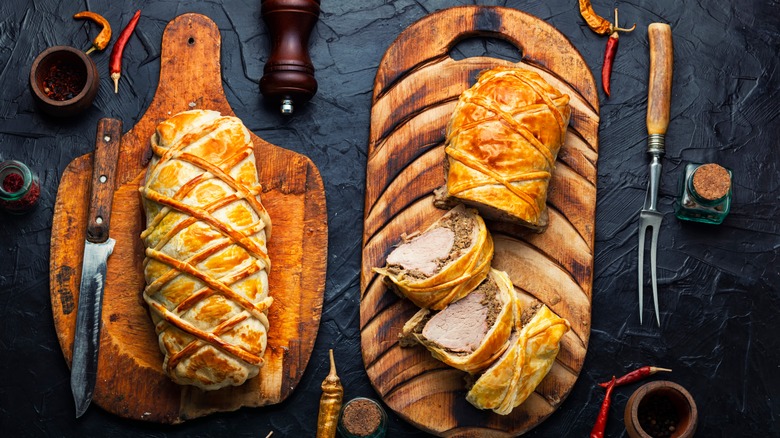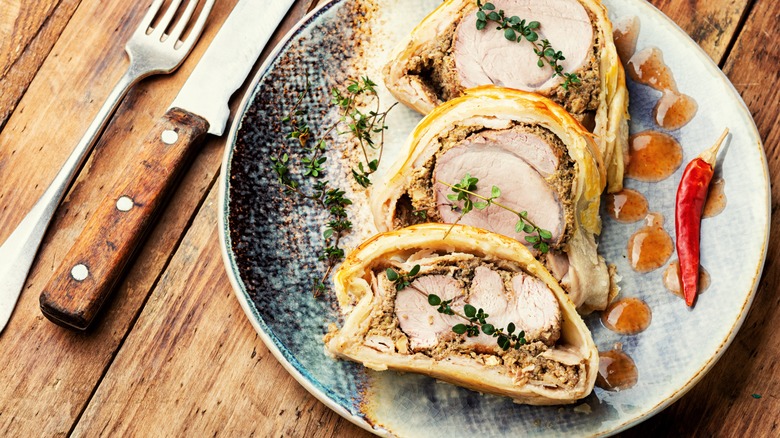The Only Cut Of Meat To Use For A Top Of The Line Pork Wellington
If you are looking for a centerpiece dish to wow your guests, look no further than a pork Wellington. It's a less expensive alternative to its famous beef counterpart, but just as tasty and impressive. And although it looks complicated, it is a straightforward recipe that requires just a bit of planning and can be started ahead of time for convenience. The secret to your success is choosing the right cut of meat, and just like with the beef recipe, you want to go with a tenderloin. This is the most tender cut of pork, and when cooked properly, it will stay moist and juicy encased in its cozy puff pastry wrapping.
A traditional beef Wellington consists of a tenderloin coated in pâté (duck or goose liver are traditional) and duxelles, which is a paste made from finely minced mushrooms, onions, and herbs, cooked to the consistency of, well, pâté. Wrapped in puff pastry, brushed with egg wash, and baked to a golden hue, the meat cooks gently to medium-rare perfection. When you swap the beef for pork, the possibilities to change and customize your seasonings abound. There are a few important adjustments to make such as temperature, but in the end, the result will be delicious and exactly what you and your guests will want.
How to make the perfect pork Wellington
You can easily take a beef Wellington recipe and adapt it to a pork tenderloin. Start by seasoning the tenderloin with salt and pepper, then sear it on all sides over a hot skillet. This helps seal the meat, keeping the juices in and bringing forth the flavors. This will also prevent a soggy puff pastry. Let the meat cool in the fridge before wrapping it, and have your puff pastry at room temperature to make it easy to roll out without breaking.
Now, it's time to customize your recipe. For this pork tenderloin wrapped in puff pastry, pineapple mustard substitutes the pâté, but you could use apple butter or your favorite whole-grain mustard instead. Try the mushroom duxelles, maybe seasoned with sage, or you can wrap the pork loin in prosciutto or serrano ham for an extra punch of umami. You could go a step further and stuff the pork before wrapping it in pastry. This recipe uses apple stuffing, but you can use sauteed spinach or leeks, pesto, roasted pimentos, sundried tomatoes, or anything you fancy, as long as the filling is dry enough to keep the pastry from getting soggy. Last but not least, make sure to cook the pork to an internal temperature of 140 degrees Fahrenheit, about 25 to 30 minutes, and let it rest for five minutes before slicing.

